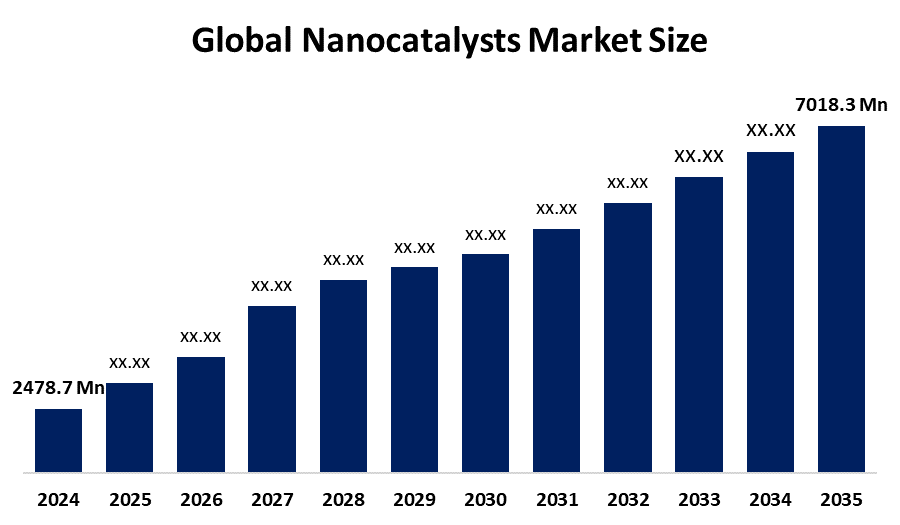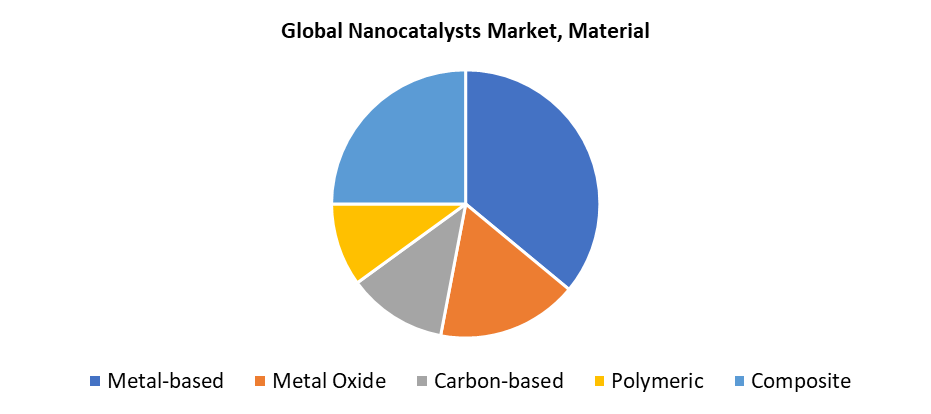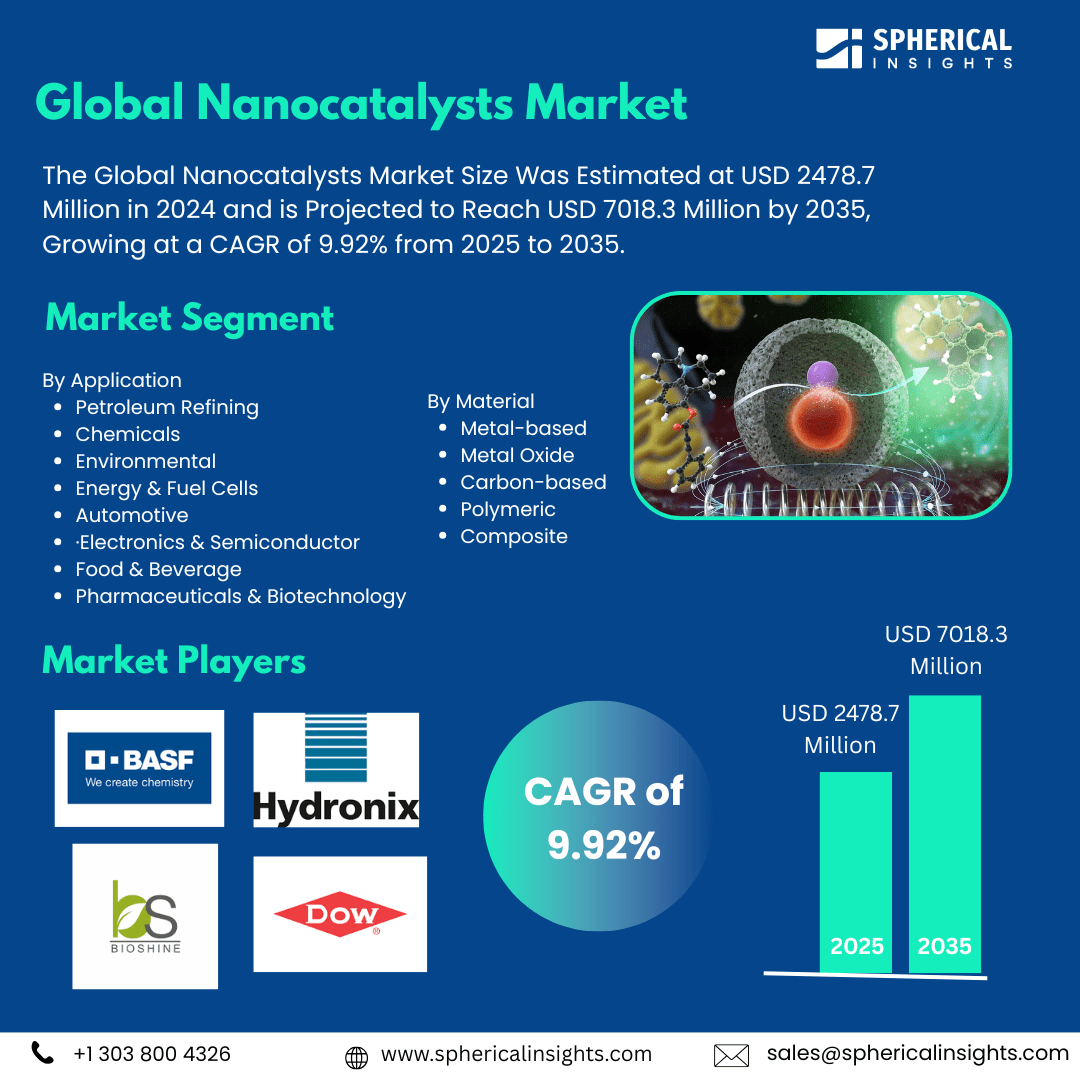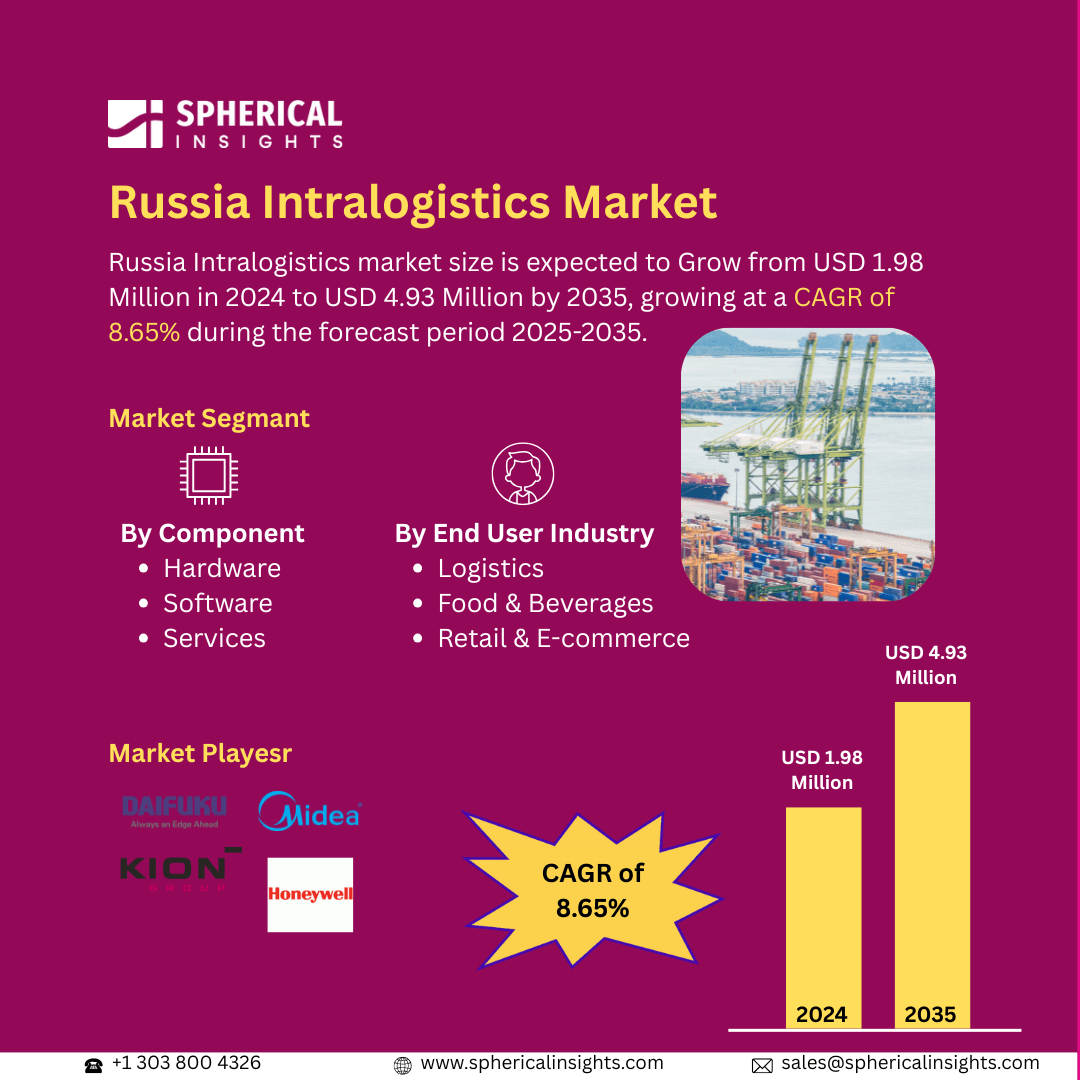Nanocatalysts Market Summary
The Global Nanocatalysts Market Size Was Estimated at USD 2478.7 Million in 2024 and is Projected to Reach USD 7018.3 Million by 2035, Growing at a CAGR of 9.92% from 2025 to 2035. The market for nanocatalysts is expanding due to a number of factors, including the need for more effective catalysts, environmental laws, the development of nanotechnology, the expansion of industrial applications, and the growing emphasis on environmentally friendly and sustainable chemical processes.
Key Regional and Segment-Wise Insights
- In 2024, Asia Pacific held the biggest revenue share of 36.4%, dominating the market for nanocatalysts.
- With a revenue share of 36.5% in 2024, the metal-based nanocatalysts segment led the market by material.
- In 2024, the petroleum refining segment had the highest revenue share by application, accounting for 30.4%.
Global Market Forecast and Revenue Outlook
- 2024 Market Size: USD 2478.7 Million
- 2035 Projected Market Size: USD 7018.3 Million
- CAGR (2025-2035): 9.92%
- Asia Pacific: Largest market in 2024

The Market Size for Nanocatalysts represents the chemical and materials sector dedicated to catalysts operating at nanoscale dimensions, which deliver enhanced surface area and reactivity and selectivity compared to conventional catalysts. Nanocatalysts find wide application across various sectors, which include medical facilities, petrochemical facilities, environmental cleanup operations, and energy production systems, including fuel cells and biofuels. The market advances because of rising environmental regulations, together with industrial demands for cleaner operations and the need for efficient, sustainable catalytic processes. Their ability to decrease energy consumption while boosting reaction efficiency and enabling environmentally friendly chemical approaches makes them vital for achieving sustainable manufacturing and renewable energy technology adoption.
Technological breakthroughs serve as the main driver that accelerates the development of nanocatalysts. Surface engineering, along with nanomaterial production and characterization methods, now enables scientists to create catalysts that demonstrate exceptional activity and selectivity for specific industrial applications. Machine learning, together with artificial intelligence, improves both catalyst discovery processes and performance optimization methods. Governments across the globe support nanotechnology research by implementing funding programs together with clean energy initiatives and environmental regulations that encourage the adoption of advanced catalysts. These research activities flourish most strongly in regions including North America, Europe, and the Asia Pacific because these areas focus heavily on green technology alongside sustainable industrial development.
Material Insights

The Metal-based segment led the nanocatalysts market in 2024 by generating 36.5% of total revenue. Their remarkable catalytic efficiency, combined with their high surface-to-volume ratio and stability under multiple reaction conditions, drives their market dominance. Metal-based nanocatalysts, including platinum, along with gold, silver, palladium, and other transition metals, find extensive application in fuel cells and automotive catalytic converters as well as chemical synthesis and environmental remediation. The reaction acceleration potential of these catalysts, combined with their low energy and raw material consumption, makes them essential for both green and industrial chemistry processes. The worldwide market leadership of metal-based nanocatalysts gained momentum through ongoing nanofabrication process development combined with the increasing need for sustainable solutions.
The nanocatalysts market's composite category will experience the fastest growth during the forecast period. The composite nanocatalysts, which unite different materials including metals and metal oxides with carbon-based materials, show distinctive advantages that fuel their rising demand. These composite materials demonstrate enhanced stability together with improved durability and catalytic efficiency when compared to catalysts based on single materials. The large surface area of composite nanocatalysts, together with their adjustable characteristics, enables better performance across various applications that include chemical manufacturing and environmental preservation, as well as energy production. Research activities, together with industry applications of composite nanocatalysts for affordable, sustainable processes, lead to market expansion. The market grows quickly because composite nanocatalysts become the preferred choice of sectors that need efficient, environmentally-friendly technologies.
Application Insights
The petroleum refining segment held the largest revenue share in the nanocatalysts market, accounting for 30.4%. Nanocatalysts achieve their highest recognition because they enhance refining operations through hydrocracking, hydrotreating, and catalytic reforming. Nanocatalysts enhance operational efficiency through their ability to speed up reactions and improve product specificity while simultaneously decreasing power requirements and dangerous waste production. The rising popularity of environmentally friendly fuels, along with tough environmental rules, increasingly fuels the adoption of advanced nanocatalysts in petroleum refining operations. The segment's strong revenue growth stems from worldwide energy needs and refining process optimization requirements to extract maximum crude oil output, making it a vital segment of the total nanocatalysts market.
During the forecast period, the chemicals segment of the nanocatalysts market will grow at the fastest CAGR. The rising demand for sustainable and efficient catalytic methods to produce agrochemicals, specialty chemicals, and pharmaceuticals fuels this market expansion. The use of nanocatalysts makes chemical manufacturing both cost-effective and environmentally friendly since these catalysts enhance reaction rates, outcome precision, and yield quantities. The chemical sector's adoption of nanocatalysts advances because of the rising interest in green chemistry, combined with increased environmental regulations. Advances in nanotechnology enable researchers to develop custom nanocatalysts that enhance specific chemical reaction efficiency and minimize by-product generation. The chemicals sector stands as a key driver for the nanocatalysts market growth since businesses focus on both sustainability and innovation.
Regional Insights
The Asia Pacific region dominated the nanocatalysts market by holding the largest revenue share of 36.4%. The region leads the market due to its rapidly expanding industrial base that includes China, India, and Japan as major centers for energy production and chemical manufacturing, and petroleum refining. The market expansion resulted from both increased nanotechnology R&D investments and supportive government programs that aim to develop innovative and sustainable technologies. The market adoption increases because industries need better catalysts for their applications, which include medical and environmental uses. The worldwide nanocatalysts market finds its leading position in the Asia Pacific because of its substantial manufacturing base combined with increasing technical developments.
North America Nanocatalysts Market Trends
The market for nanocatalysts in North America will continue to grow steadily because industries require high technological advancements. The well-established chemical and pharmaceutical sectors, together with petroleum refining operations in this region, depend increasingly on nanocatalysts to enhance their production capabilities and sustainability. The market for nanocatalysts grows because industries use cleaner and more efficient catalytic solutions to comply with environmental regulations. Large R&D investments by both government and private organizations drive the advancement of nanocatalyst materials and their applications. Market growth receives support from both major industry players and complex infrastructure systems. The market for nanocatalysts will experience rapid growth during the forecast period because North American industries focus on enhancing process efficiency while reducing carbon emissions.
Europe Nanocatalysts Market Trends
Nanocatalysts experience significant market expansion in Europe because industries, including chemical, pharmaceutical, and automotive, require sustainable catalytic solutions. European environmental standards drive nanocatalysts adoption for fuel production, which produces cleaner energy and emission reduction. Nanotechnology advancements have enhanced catalyst effectiveness through improved selectivity and faster reaction rates, which drive enhanced industrial operational efficiency. The development of nanocatalyst applications receives stimulation from rising investments by government and private entities into research and development activities. Market growth occurs because of rising attention to sustainable manufacturing practices and green energy solutions. The European market for nanocatalysts shows fast expansion because the region demonstrates its commitment to both environmental protection and technological progress.
Key Nanocatalysts Companies:
The following are the leading companies in the nanocatalysts market. These companies collectively hold the largest market share and dictate industry trends.
- BASF SE
- Headwaters NanoKinetix, Inc.
- Dow, Inc.
- Hyperion Catalysis International
- Bayer AG
- Catalytic Solution, Inc.
- Evonik Industries AG
- NanoScale Corporation
- Nanostellar, Inc.
- Nanophase Technologies Corporation
- Others
Market Segment
This study forecasts revenue at global, regional, and country levels from 2020 to 2035. Spherical Insights has segmented the nanocatalysts market based on the below-mentioned segments:
Global Nanocatalysts Market, By Material
- Metal-based
- Metal Oxide
- Carbon-based
- Polymeric
- Composite
Global Nanocatalysts Market, By Application
- Petroleum Refining
- Chemicals
- Environmental
- Energy & Fuel Cells
- Automotive
- Electronics & Semiconductor
- Food & Beverage
- Pharmaceuticals & Biotechnology
Global Nanocatalysts Market, By Regional Analysis
- North America
- Europe
- Germany
- UK
- France
- Italy
- Spain
- Russia
- Rest of Europe
- Asia Pacific
- China
- Japan
- India
- South Korea
- Australia
- Rest of Asia Pacific
- South America
- Brazil
- Argentina
- Rest of South America
- Middle East & Africa
- UAE
- Saudi Arabia
- Qatar
- South Africa
- Rest of the Middle East & Africa





